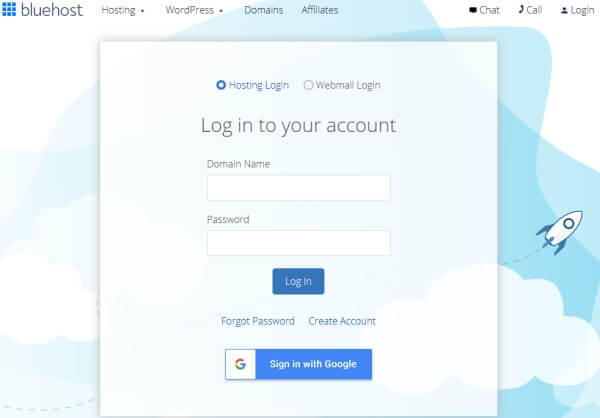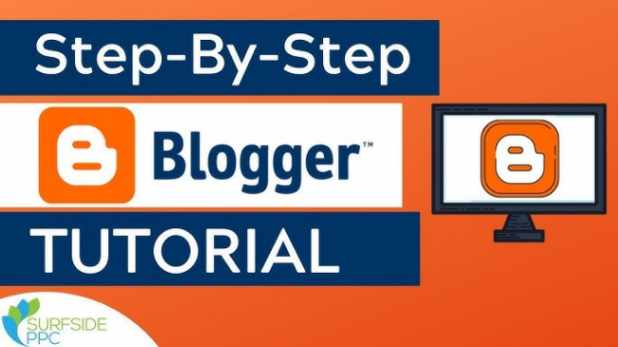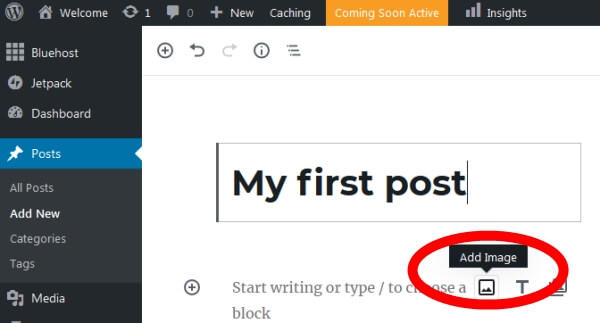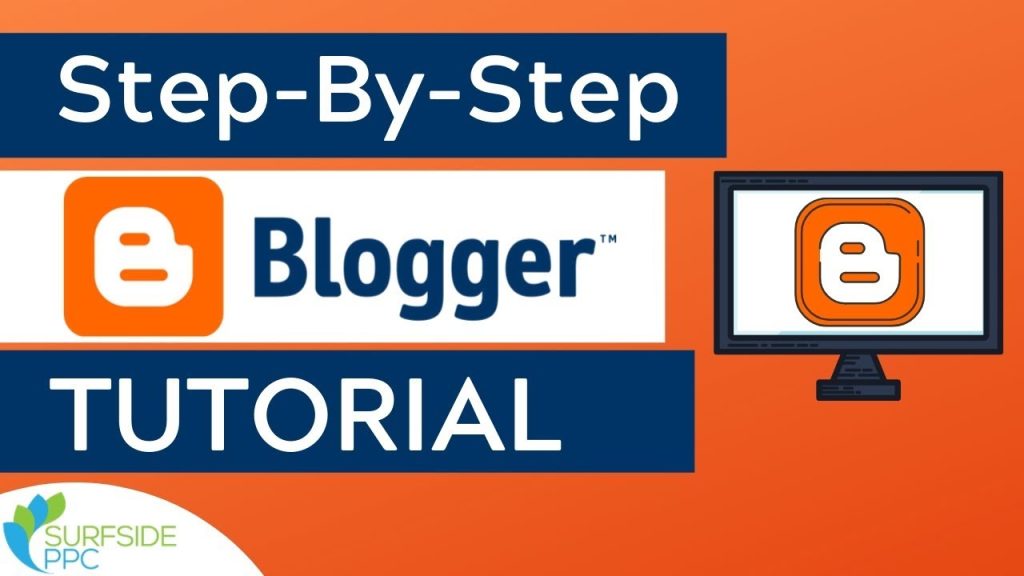Discover how to create a blog step-by-step. Choose the right platform, design your site, and publish your first post with this easy beginner’s guide!
Starting a blog is a great way to share your thoughts, hobbies, or business ideas with the world. Whether you want to write about travel, food, or personal experiences, a blog gives you a platform to reach a wide audience.
In this guide, you’ll learn the basic steps to set up your blog. From choosing the right platform to picking a memorable name, every step is crucial. Don’t worry if you’re not tech-savvy. This process is simpler than you might think. Let’s dive in and get your blog up and running!

Credit: www.theblogstarter.com
Choosing A Niche
Creating a blog starts with choosing a niche. Your niche is the specific topic or area that your blog will focus on. It is important to select a niche you are passionate about and one that has potential for growth. This section will guide you through the process of choosing the right niche for your blog.
Identify Interests
Begin by listing your interests. Think about what excites you and what you enjoy talking about. Consider hobbies, skills, and experiences.
- Ask yourself: What are my hobbies?
- What topics do I enjoy reading about?
- What skills do I have?
- What experiences can I share?
Write down your answers. This list will help you identify potential niches. Choose a niche that you can write about consistently.
Market Research
Once you have a list of interests, conduct market research. This step will help you understand the demand and competition for each niche.
- Use Google Trends to check the popularity of your niche.
- Search for existing blogs in your chosen niche.
- Analyze their content and identify gaps you can fill.
- Check social media platforms for related groups and discussions.
A table can help you compare the popularity and competition of different niches.
| Niche | Popularity (Google Trends) | Competition (Number of Blogs) |
|---|---|---|
| Travel | High | High |
| Cooking | Medium | Medium |
| Fitness | High | High |
Use this information to choose a niche that has a good balance of demand and competition. Aim for a niche that is popular but not oversaturated.
Setting Up Your Blog
Setting up your blog can be an exciting journey. It involves some essential steps to ensure your blog runs smoothly. This guide will help you get started on the right foot. Let’s dive into the key components of setting up your blog.
Selecting A Platform
The first step in setting up your blog is choosing a platform. Popular options include WordPress, Blogger, and Wix. Each platform has its unique features. WordPress is flexible and widely used. Blogger is easy for beginners. Wix offers drag-and-drop functionality. Consider what you need and choose accordingly.
Domain And Hosting
Next, you need a domain name. Your domain name is your blog’s address on the web. Choose something memorable and relevant to your content. Keep it short and avoid numbers or hyphens.
After choosing a domain, you need hosting. Hosting is where your blog lives online. Many companies offer hosting services. Some popular ones include Bluehost, SiteGround, and HostGator. Compare their features and prices. Choose one that fits your budget and needs.
Once you have your domain and hosting, connect them. Most hosting providers offer easy-to-follow guides for this step. After connecting your domain and hosting, your blog is ready to go live. Now, you can start customizing and adding content.
Designing Your Blog
Designing your blog is a crucial step in creating a successful online presence. A well-designed blog attracts readers and keeps them engaged. It also reflects your brand and personality. Let’s explore how to design your blog effectively.
Theme Selection
Selecting the right theme for your blog is essential. A theme determines the overall look and feel of your site. Choose a theme that matches your content and brand. Many platforms, like WordPress, offer a variety of free and premium themes. Here are some tips to help you select the perfect theme:
- Responsive Design: Ensure the theme is mobile-friendly. Many users access blogs on their phones.
- Customizable: Pick a theme that allows easy customization. You might want to change colors, fonts, and layouts.
- Speed: Fast loading times improve user experience. Choose a theme known for its speed.
- Support: Opt for themes that offer good support and regular updates.
Customization Tips
Customizing your blog theme makes it unique. Personal touches can enhance your brand and attract more readers. Here are some practical customization tips:
- Logo: Add your logo to the header. This increases brand recognition.
- Colors: Use colors that represent your brand. Stick to a consistent color scheme.
- Fonts: Select readable fonts. Avoid using too many different fonts.
- Layout: Choose a layout that suits your content. For example, a grid layout works well for photo blogs.
- Widgets: Add useful widgets like a search bar, recent posts, and social media links.
Here’s a simple table to summarize the customization tips:
| Customization Element | Purpose |
|---|---|
| Logo | Brand recognition |
| Colors | Brand representation |
| Fonts | Readability |
| Layout | Content suitability |
| Widgets | Functionality |
By following these tips, you can design a blog that stands out and engages your readers.

Credit: m.youtube.com
Content Creation
Creating engaging content is vital for a successful blog. Good content attracts readers and encourages them to return. This section will guide you through the process of content creation.
Content Planning
Planning is the first step in content creation. Start by brainstorming ideas. Think about what topics your audience will find interesting. Research your topics thoroughly. Use tools like Google Trends to understand what people are searching for. Create a content calendar. This helps you stay organized and ensures regular posting. Plan your posts based on seasonal trends and events.
Writing Tips
Good writing keeps readers engaged. Start with a catchy headline. A good headline grabs attention. Write short, clear sentences. Avoid using complex words. This makes your content easy to read. Break your text into small paragraphs. Each paragraph should focus on one idea. Use bullet points and subheadings. These make your content more readable.
Edit your content before publishing. Look for grammar errors and typos. Use tools like Grammarly for help. Read your content aloud. This helps you find awkward phrases and sentences. Keep your tone friendly and conversational. This makes your content more engaging.
Seo Basics
Understanding SEO basics is crucial for your blog’s success. SEO (Search Engine Optimization) helps your blog rank higher on search engines. This increases your visibility and attracts more readers.
Keyword Research
Start with keyword research. Identify words and phrases your audience searches for. Use tools like Google Keyword Planner or Ahrefs. Focus on keywords relevant to your blog topic. Look for keywords with high search volume and low competition. This gives you a better chance to rank higher. Include these keywords naturally in your content.
On-page Seo
On-page SEO involves optimizing individual blog posts. Ensure each post has a unique title and meta description. Use your primary keyword in the title. Include it in the first 100 words of your post. Use header tags (H1, H2, H3) for better readability. Add keywords in these headers naturally.
Optimize images by adding alt text. This helps search engines understand your images. Include keywords in the alt text. Use internal and external links. Link to other posts on your blog and credible external sites. This improves your blog’s authority.
Finally, write quality content. Make sure it is valuable and relevant to your readers. Search engines favor well-written, informative content.

Credit: www.theblogstarter.com
Promoting Your Blog
After creating your blog, the next step is promoting it. Promotion helps you reach a wider audience. This section will discuss effective strategies to promote your blog.
Social Media Strategies
Social media is a powerful tool for blog promotion. Each platform has its own unique audience and benefits.
- Facebook: Share your blog posts on your personal profile and relevant groups. Use engaging captions and images.
- Twitter: Tweet your blog links with trending hashtags. Engage with your followers through comments and retweets.
- Instagram: Use Stories and posts to share snippets of your blog. Utilize relevant hashtags and collaborate with influencers.
- LinkedIn: Share your blog posts on your profile and in professional groups. Write a brief summary to attract readers.
- Pinterest: Create eye-catching pins that link to your blog. Join group boards to expand your reach.
Guest Posting
Guest posting involves writing articles for other blogs. This strategy helps you gain backlinks and exposure.
- Identify Relevant Blogs: Look for blogs in your niche. Ensure they have a good audience and engagement.
- Pitch Your Ideas: Email the blog owner with your article ideas. Keep your pitch concise and relevant.
- Write High-Quality Content: Provide value in your guest posts. Ensure your content is informative and well-written.
- Include a Bio: Add a brief bio with a link to your blog. This drives traffic back to your site.
| Social Media Platform | Key Strategy |
|---|---|
| Share posts in relevant groups | |
| Use trending hashtags | |
| Use Stories and hashtags | |
| Share in professional groups | |
| Create eye-catching pins |
Effective promotion requires consistent effort. Use these strategies to grow your blog’s audience.
Monetizing Your Blog
Creating a blog is only the first step. To make it profitable, you need to understand how to monetize it effectively. There are various methods to generate income from your blog. This section explores two popular strategies: Affiliate Marketing and Sponsored Posts.
Affiliate Marketing
Affiliate Marketing is a great way to earn from your blog. You promote products or services and earn a commission for every sale made through your referral link. Here are some tips to get started:
- Choose relevant products: Promote items related to your blog’s niche.
- Join affiliate programs: Sign up for programs like Amazon Associates or ShareASale.
- Create valuable content: Write reviews or tutorials that include affiliate links.
- Disclose your affiliations: Be transparent with your readers about your affiliations.
Sponsored Posts
Sponsored Posts involve collaborating with brands to create content that promotes their products or services. Brands pay you to write these posts. Here are some steps to get started:
- Build your audience: Brands prefer blogs with a strong following.
- Reach out to brands: Contact companies that align with your blog’s niche.
- Negotiate terms: Discuss the scope of work and payment.
- Create engaging content: Ensure the sponsored post is interesting and valuable to your readers.
- Follow guidelines: Adhere to the brand’s requirements and disclosure policies.
Here is an example of how to format a sponsored post disclosure:
This is a sponsored post written by me on behalf of Brand Name. All opinions are 100% mine.
Using these methods, you can start earning from your blog. Focus on providing value to your readers while promoting products and services.
Analyzing Performance
Creating a blog is just the beginning of your journey. To succeed, you must analyze your blog’s performance. This helps you understand what works and what needs improvement.
Using Analytics Tools
To analyze your blog’s performance, you need analytics tools. Google Analytics is a popular choice. It provides detailed reports about your blog traffic and user behavior.
Set up Google Analytics by adding a tracking code to your blog. This code collects data from your visitors and sends it to your Google Analytics account. You can then view various metrics and reports.
Other tools like SEMrush and Ahrefs also offer valuable insights. They help you track keyword performance and backlinks. This information helps you refine your content strategy.
| Tool | Main Feature |
|---|---|
| Google Analytics | Traffic and user behavior analysis |
| SEMrush | Keyword tracking and SEO insights |
| Ahrefs | Backlink analysis and keyword research |
Traffic And Engagement
Understanding your blog’s traffic and engagement is crucial. Traffic shows how many visitors your blog attracts. Engagement shows how visitors interact with your content.
Focus on these key metrics:
- Pageviews: Number of pages viewed.
- Unique visitors: Number of individual visitors.
- Average session duration: Time spent on your blog.
- Bounce rate: Percentage of visitors who leave after viewing one page.
- Comments and shares: Indicators of engagement.
Tracking these metrics helps you understand your audience’s behavior. If the bounce rate is high, improve your content to make it more engaging.
Analyze which posts get the most comments and shares. This helps you identify what type of content resonates with your audience.
Use the insights from analytics tools to continuously improve your blog. This ensures you provide valuable content that keeps your audience engaged.
Frequently Asked Questions
What Are The Steps To Start A Blog?
To start a blog, choose a niche, select a platform, and get a domain. Then, design your blog, write quality content, and promote it.
How Do I Choose A Blog Topic?
Choose a blog topic by identifying your passions and researching popular trends. Focus on a niche with high interest and low competition.
What Platforms Are Best For Blogging?
Popular blogging platforms include WordPress, Blogger, and Wix. WordPress is highly recommended for its flexibility and extensive plugins.
How Often Should I Post On My Blog?
Post regularly to keep readers engaged. Aim for at least one post per week. Consistency is key for building an audience.
Conclusion
Creating a blog can be simple with the right steps. Start with clear goals. Pick a niche that interests you. Choose a reliable platform. Write engaging content regularly. Promote your blog on social media. Interact with your readers. Keep learning and improving.
Consistency is key. Blogging takes time and effort. Stay patient and enjoy the process. Your blog can grow with dedication. Happy blogging!




